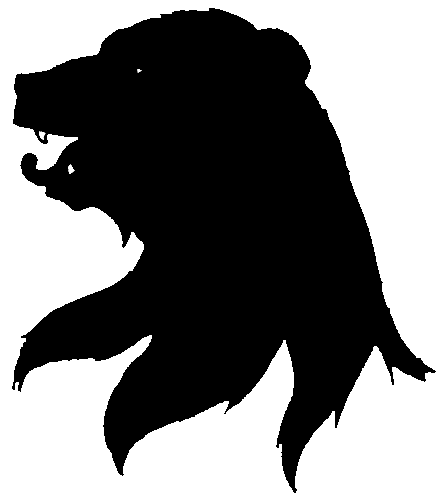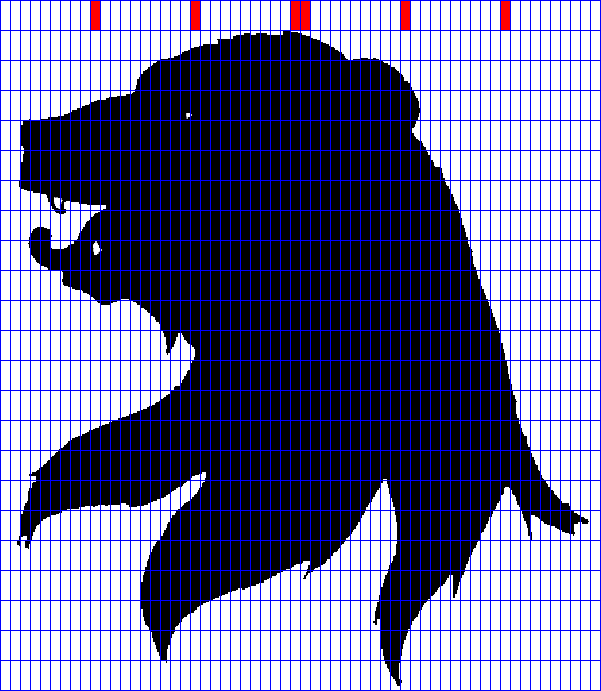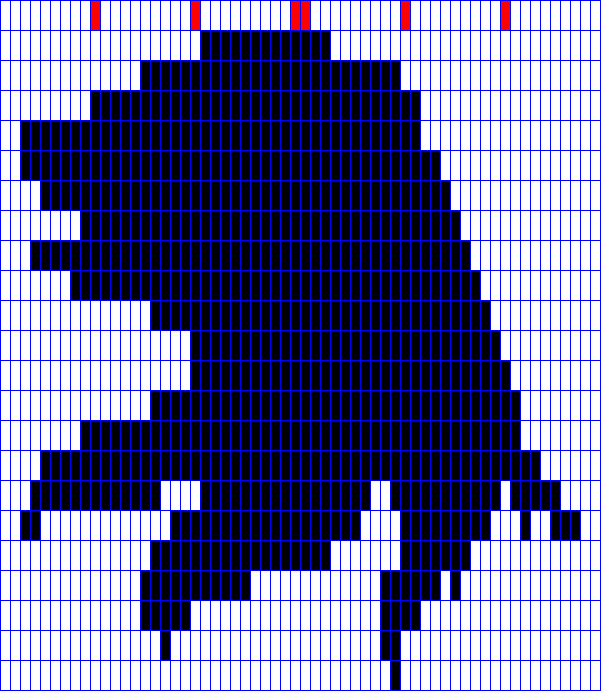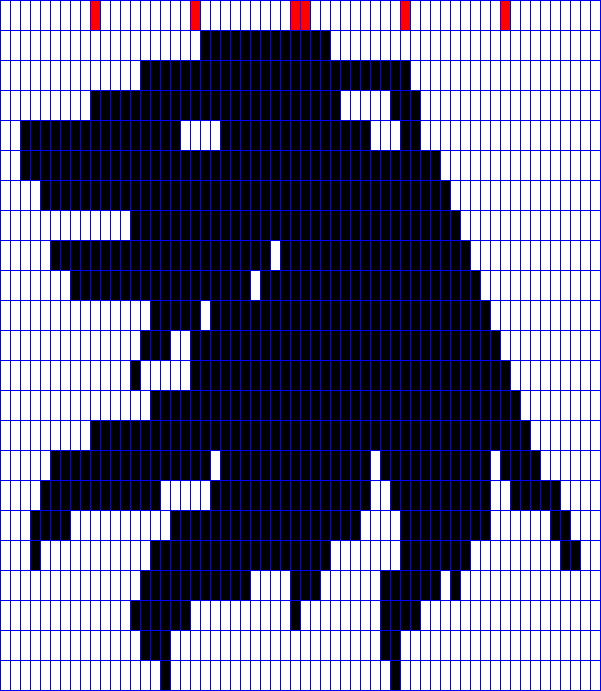The following article outlines the process by which I map double-face tablet weaving patterns from pre-existing images. As with many such techniques, mine is not the only way. Nor, for that matter, do I lay any claim to either originality or periodicity. This is solely a method of producing a relatively clean pictoral pattern for tablet weaving.
First, find the image that you want to convert (in this case, my bear head badge will be used).

Then convert the image into two colors, here black and white.

Next, create a grid of rectangles based on your particular weaving ratio and the number of tablets you plan to use in your design. I weave at a 3:1 ratio, so my rectangles are three times as long as they are wide. I’ve found that 60 cards create a decent-sized band, so we’ll use that many here, with my grid being 60 rectangles wide.

Now expand your image to the size of the grid, and overlay the grid over the image. Please keep in mind that the orientation of the grid is important. If you want the vertical portion of your image to parallel the weft of your band, the rectangles should be horizontal in relation to the image. Likewise, if you want the vertical portion of your image to parallel the warp of your band, the rectangles should be vertical in relation to the image.

At this point, you will be going from rectangle to rectangle, deciding whether it is filled predominantly with one color or the other, then filling the entire rectangle with that choice. If you have a relatively solid image, most of this work will be done already; all you need to worry about are the exterior edges.

From here, you have the bulk of your pattern, and need only do touch-ups to give greater definiton to your image. For this, I recommend placing the pattern next to the original image, deciding which details are most important, and through trial and error switch the color of certain rectangles to give such detailing. This is more of an art than a science, but with enough practice you should be able to edit the design by sight. Then be sure to save your pattern and try weaving it as soon as possible.
